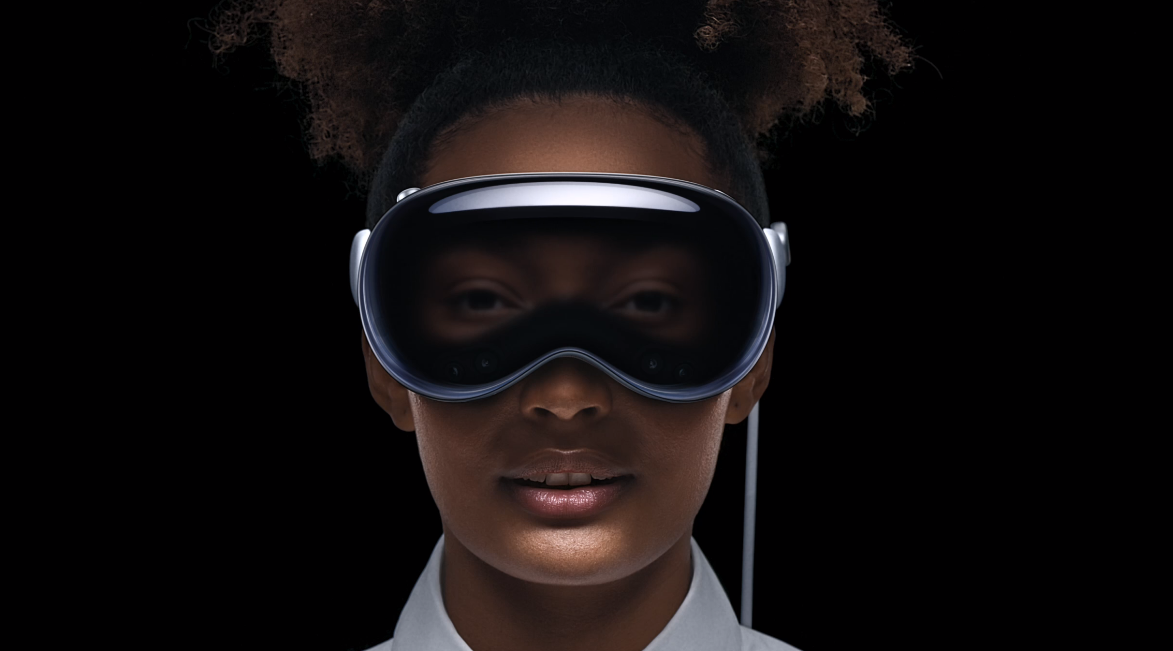Apple’s Vision Pro headset is generating intense debate worldwide, even before its official launch. Some view it as a groundbreaking gadget, while others question its potential value. Regardless of your stance, one thing is clear – Apple has succeeded in sparking conversations about it.
This new product category marks a significant step for Apple since the Apple Watch, but its success hinges on developer interest. An empty app store upon the Vision Pro’s release would be detrimental to its reputation. Apple is confident that this won’t happen and believes that developers will eagerly embrace this innovative device.
In an exclusive interview, we had the opportunity to learn about Apple’s efforts to entice developers and why customers will adore the Vision Pro. We sat down with Susan Prescott, Apple’s Vice President of Worldwide Developer Relations, and Steve Sinclair, Senior Director of Product Marketing for Apple Vision Pro. We also spoke with several developers actively creating apps and games for the Vision Pro to gain their insights.
Developer Enthusiasm
Following the Vision Pro headset’s unveiling at the Worldwide Developers Conference (WWDC) in June 2023, there were initial reports suggesting a lukewarm response from developers at the device’s labs, where they could collaborate with Apple to refine their concepts.
However, Apple insists that developers are even more excited about the product than anticipated. According to Prescott, customer satisfaction at these labs has been “extremely high,” implying overwhelmingly positive feedback.
Sinclair mentioned that the number of SDK (software development kit) downloads has surpassed their expectations. He attributes this to Apple’s ability to showcase the device’s potential to developers at WWDC and then allow them to interact with it during dedicated events in the following week.
Experiencing activities like watching movies on a vast canvas or immersing oneself in 3D memories has inspired developers to create their own unique experiences.
Ryan McLeod, the game designer at Shapes & Stories and creator of the Blackbox iOS game, emphasized the significance of hands-on sessions. These hands-on labs were instrumental in sparking his creativity. McLeod believes that such opportunities, especially for smaller indie development teams, are critical for the platform’s success.
These labs, along with online resources, a loan program for Vision Pro headsets, and compatibility evaluations for developers, are part of Apple’s strategy to engage developers effectively. They aim not only to have a wide range of apps available for the Vision Pro but also to ensure they work seamlessly.
A New Era of Computing
Apple is not the first company to venture into the extended reality (XR) headset space. While other companies have attempted to capture the public’s imagination, none have achieved mainstream success. XR headsets have remained niche products, and initial sales projections for Vision Pro are lower than Apple’s flagship products.
However, developers don’t seem concerned about the potential for a smaller user base. Tommy Palm, CEO of Resolution Games, a company specializing in XR games, sees Apple’s entry into this market as monumental. He draws parallels between the dawn of Vision Pro and the early days of the computer era in the 1980s.
Similarly, representatives from XRHealth, which focuses on XR apps for healthcare, believe that XR devices are where smartphones were 20 years ago, with the potential to become the primary device for users in the next 20 years.
They are enthusiastic about working on Apple’s headset, especially in healthcare applications. For enterprises like Stryker, which designs enterprise XR apps for healthcare, Vision Pro can reduce the need for expensive specialized equipment.
While Ryan McLeod is cautiously optimistic due to his small development studio’s scale, he sees it as an opportunity to explore new concepts and create memorable experiences in the XR space.
Overcoming Skepticism
Despite these efforts, there is still skepticism about wearing a large, expensive device like Vision Pro for extended periods. Apple acknowledges this challenge and is focusing on showcasing the device’s unique spatial experiences. By creating apps that fully leverage the headset’s capabilities, Apple aims to demonstrate its value to users.
Apple intentionally avoided custom hand controllers for Vision Pro, preferring users to interact with familiar methods such as their eyes, hands, and voice. This approach is reminiscent of Steve Jobs’ reluctance to include a stylus with the original iPhone.
Continued Engagement with Developers
For Vision Pro to succeed, it must continue to attract app developers even after the initial excitement wanes. Apple is committed to making the platform accessible to all developers by leveraging familiar tools. Developers can use tools like Xcode, SwiftUI, ARKit, and more to build apps for the Vision Pro.
Palm suggests that Apple should continue building tools and solutions to support developers as the platform evolves. This ongoing support is crucial to building strong relationships with developers and consumers.
Developers also propose that Apple offer grants to developers who cannot afford the headset or necessary equipment, further empowering the developer community. Additionally, hands-on experiences with Vision Pro headsets are deemed essential for developers to truly understand the platform’s potential.
In conclusion, while it’s too early to predict the Vision Pro’s success, developers are impressed with their experiences so far. The real challenge for Apple lies in convincing more developers to build on visionOS and persuading consumers to invest in this innovative device. Regardless of the outcome, one thing is certain – the world will continue to discuss the Vision Pro.
